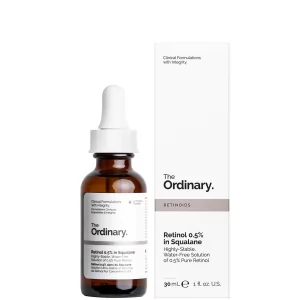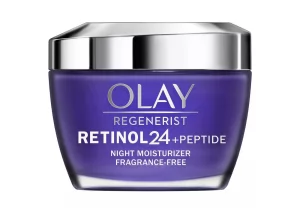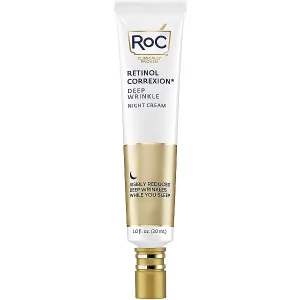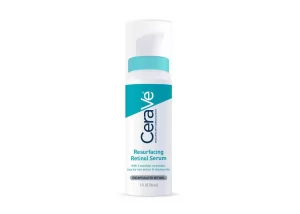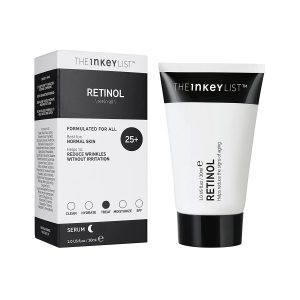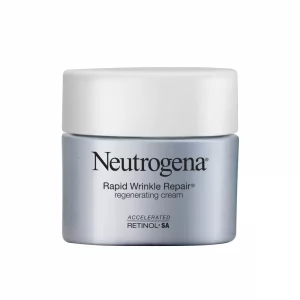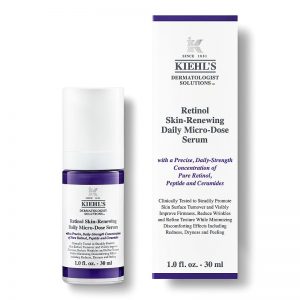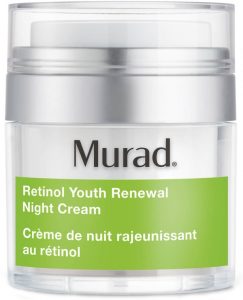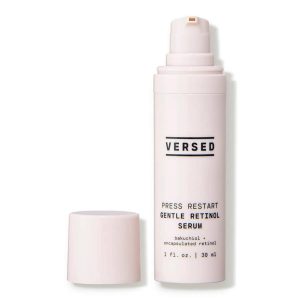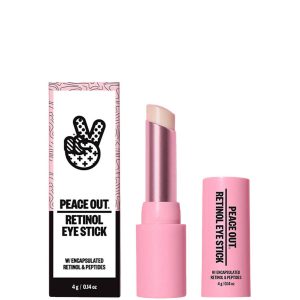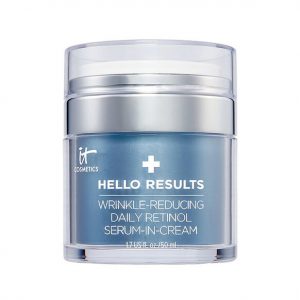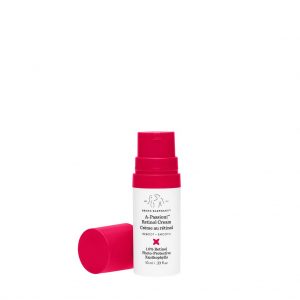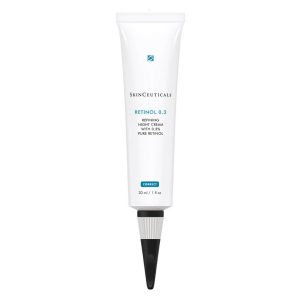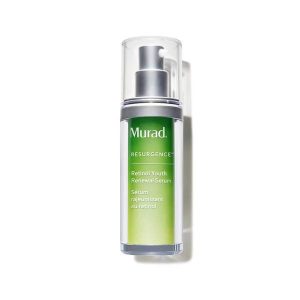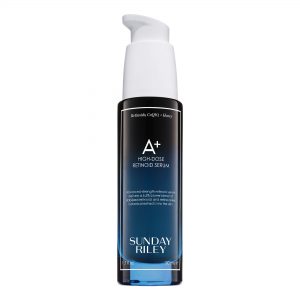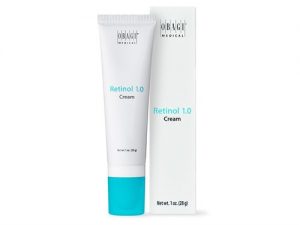Retinoids are a true star among the skincare ingredients, with many studies that account for their outstanding results. Some are over-the-counter products while others are medical grade, but all provide anti-aging effects and acne-fighting properties to different degrees.
I talked with my own dermatologist, Dr. Marjory Nigro, about the primary benefits and some of the myths and half-truths surrounding this class of ingredients. Today’s article will tell you all you need to know about retinol and other retinoids, how to include them in your routine, and what to expect (spoiler alert: fantastic results!).
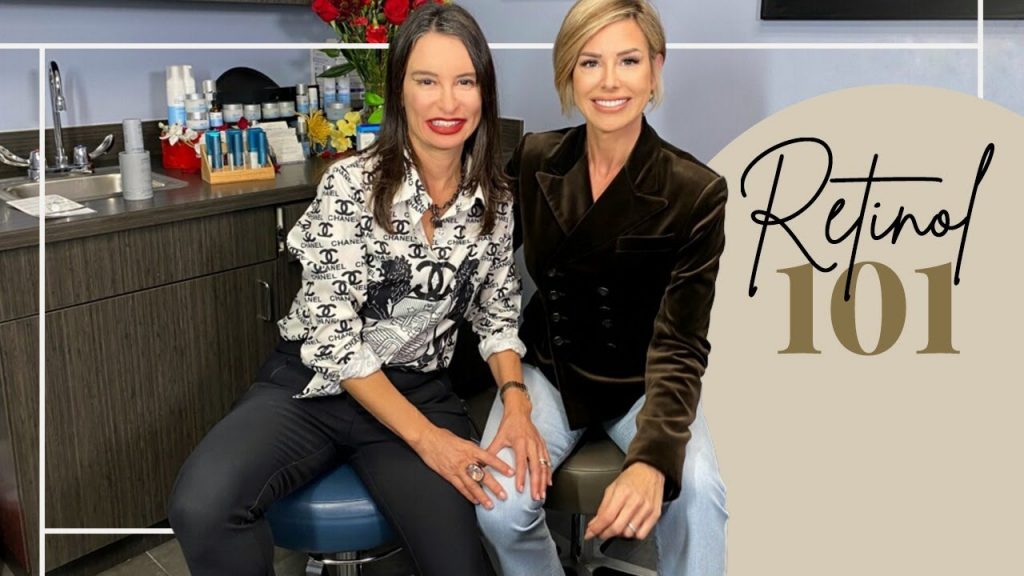
What Is Retinol, And What Does Retinol Do?
Retinol is a part of the retinoid family that is considered the best for skin health. There are different ingredients in this range, like tretinoin, adapalene, or tazarotene, with various degrees of potency. All forms are of vitamin A and can be found in nature – especially in vegetables, carrots having the largest concentration.
Retinol is a milder version of this family, meaning our skin better tolerates it. This makes it an excellent option when you are just introducing a retinoid to your routine or when having sensitive skin.
The primary benefit of retinol is promoting cell turnover – this means our skin renews itself faster and better. It also stimulates collagen and elastin production, which ensures the skin’s natural plump and elastic appearance.
The Best Retinol Products, Creams, and Serums
As mentioned above, retinol is a super star ingredient that should have a place in every skincare routine. Below you can find our favorite products, so surely you can find one that is suited for your specific concerns and skin type. Be sure to check them out:
Best Affordable Retinol:
Here is a little roundup for the best products that you can find at the drugstore; they are affordable and very efficient, so it’s a win-win!
The Ordinary Retinol 0.5% in Squalane
Our review: The Ordinary Retinol 0.5% in squalane is an oil-based serum; the company wanted to bring its customers a more stable formula, given the lack of water and the dark-colored bottle. It is an oily texture, but squalane is supposed to be suited for all skin types, given that it mimics the natural oils within the skin.
Give this one a try since it has a solid 0.5% and promises to deliver all the great benefits that retinol has to offer.
Olay Regenerist Retinol 24
Our review: Olay Regenerist Retinol 24 is a fragrance-free moisturizer with the added benefits of retinol, retinyl propionate (a vitamin A ester), and niacinamide (that further helps with brightness).
TThe hydrating texture and the lack of fragrance mean this is a gentler formula. Chances are you will get fewer side effects with this one, but introduce it to your routine carefully, regardless.
ROC Retinol Correxion Deep Wrinkle Night Cream
Our review: ROC Retinol has a surprisingly light texture and has the advantage of being very affordable. The product has a small concentration of pure retinol that gives you visible results, and it’s a cult favorite, even winning some awards for the best drugstore beauty products.
ROC Retinol Cream comes in a pretty gentle formula, with added glycerin, which provides hydration, and panthenol, a soothing agent. Both help diminishes those usual side effects you get from retinol products, but air on the side of caution with this one, too.
Cerave Resurfacing Retinol Serum
Our review: The Cerave Retinol Serum is marketed more towards skin prone to acne and PIH (post-inflammatory hyperpigmentation). It claims to help with those marks left after breakouts and general appearance and uneven skin.
Cerave Retinol is a water-based and silicone serum with a light texture. The formula includes 0.2% retinol, hyaluronic acid, niacinamide (promoting brightness, reducing pore size), and three ceramides (help with hydration level and maintaining a healthy skin barrier).
L’oreal Retinol Serum
Our review: L’oreal gives customers this intriguing Revitalift Laser Pure Retinol Serum. It contains 0.2% of pure retinol and claims to help with wrinkles, sunspots, and uneven skin.
TThe L’oreal Retinol Serum is a water-based product, with added glycerin and hyaluronic acid, for increased hydration. It has denatured alcohol pretty high up on the ingredient list, probably for improved texture, but keep in mind that it can potentially irritate more reactive skin.
Inkey List Retinol
Our review: Indie brand The Inkey List brings us this serum, with 1% stabilized retinol and 0.5% granactive retinoid; the latter is an ester of vitamin A, more stable and less irritating than pure retinol.
While there are few independent studies for this newer generation ingredient, granactive retinoid seems very promising.
Neutrogena Rapid Wrinkle Repair Regenerative Cream
Our review: Neutrogena Rapid Wrinkle Repair Cream is a water-based moisturizer; the formula also contains silicones, glycerin, and hyaluronic acid. These make it a hydrating but very lightweight product that should be suited for all skin types, even the more oily ones.
This moisturizer contains pure retinol and promises to deliver outstanding results regarding wrinkles, dullness, and other signs of aging. It’s also worth mentioning Neutrogena Rapid Wrinkle Repair Regenerative Cream is fragrance-free, so an excellent option for those sensitive to this class of ingredients.
Best Retinol for Sensitive Skin:
If you are concerned that you cannot use retinoids if having sensitive skin, fear not, we’ve got you covered! Here are some very gentle retinol options you can try:
Kiehl’s MicroDose Anti Aging Retinol
Our review: The following product claims to deliver all the benefits of retinol without the usual side effects. Kiehl’s MicroDose Anti Aging Serum has a gentle formula, with only 0.2% retinol; it’s packed with other excellent ingredients, such as ceramides, peptides, and niacinamide, that promote a glowing and hydrated complexion.
Kiehl’s MicroDose Anti Aging Serum is an excellent option for those just introducing a retinol product in their routine. It has a very small dose of retinol, so fewer chances of irritation, plus it’s fragrance-free, so better suited for those with reactive skin.
Murad Retinol Youth Renewal Night Cream
Our review: Much like the previously mentioned Olay retinol product, Murad’s Youth Renewal Night Cream combines pure retinol with retinyl propionate and niacinamide. So this formula packs a punch when it comes to visible benefits on wrinkles, luminosity, and an overall more youthful complexion.
Murad Retinol Night Cream is on the more expensive side, at approximately $80. But the excellent results are well worth it, so give this one a try.
Versed Skin Press Restart Gentle Retinol Serum:
Our review: The following product is a very interesting one from Versed Skin – Press Restart Gentle Retinol Serum. The formula has an encapsulated retinol of concentration and bakuchiol; a plant extract, bakuchiol behaves similarly to retinol, meaning it promotes cell turnover and stimulates collagen production.
KKeep in mind that Versed Skin Press Restart Gentle Retinol has a more emollient texture due to sunflower oil and shea butter. So maybe not the best option for those with very oily or acne-prone skin.
Peace Out Retinol Eye Stick
Our review: How about a prodHow about a product made especially for the eye area that just glides easily on this sensitive area? Try this Peace Out Retinol Eye Stick that gives you all the benefits of retinol in this very practical and cute packaging.
The retinol stick is more of a waxy conThe retinol stick is more of a waxy consistency, and it provides many beneficial ingredients such as squalane, oat extract (a soothing agent), peptides, and bakuchiol (a plant extract that mimics the effects of pure retinol).
It Cosmetics Hello Results Wrinkle-Results Daily Retinol Serum-In-Cream
Our review: This product from It Cosmetics has a creamier consistency and packs two retinol, a pure and an encapsulated one. It is targeted towards dull skin, with dark spots, fine lines and wrinkles.
The formula is very light, and it gives the added benefits of niacinamide (promotes brightness and pore reducing), panthenol (a very soothing, repairing agent), and vitamin E.
Drunk Elephant A-Passioni Retinol Cream
Our review: Next, we have Drunk Elephant A-Passioni Retinol Cream, a truly impressive product. It packs 1% pure retinol that promotes skin brightness, wrinkle, fine lines, and pore reduction, and more even skin.
The fragrance-free formula has so many other star ingredients, such as plant extract and oils, peptides and ceramides, humectants (glycerin and hyaluronic acid that keep the skin hydrated), and niacinamide. Drunk Elephant A-Passioni Retinol Cream is a product that deserves a try!
Best High-End Retinols
If the budget is not a concern, here are some more interesting and more elegant retinol creams and serums that you can choose from:
Skinceuticals Retinol
Our review: From Skinceuticals comes this elegant night cream with 0.3% retinol. It reduces wrinkles, fine lines, discoloration and gives a more glowing and youthful appearance.
The texture on this one is more emollient and includes bisabolol, a potent anti-inflammatory and soothing ingredientThe texture on this one is more emollient and includes bisabolol, a potent anti-inflammatory, and soothing ingredient.
Murad Retinol Youth Renewal Serum
Our review: Murad brings its customers another star product, with their Retinol Youth Renewal Serum. It packs not one but two forms of retinoids – pure retinol and retinyl propionate. The latter is a vitamin A ester, but data shows it’s the most effective one, with impressive visible results.
Murad Retinol Youth Renewal Serum includes other great ingredients, like glycerin, urea, ceramides, and vitamin E, making this product an excellent option for you to try.
Sunday Riley Retinol Cream
Our review: Sunday Riley’s Retinol Serum claims to have a 6.5% retinol blend; this means a combination of an encapsulated form of retinol and a series of vitamin A esters.
Although on the expensive side, this retinol serum has an elegant formula and promises a gentle product with visible and lasting results.
Obagi Retinol
Our review: This Obagi product contains the maximum amount of retinol that you can find over-the-counter: 1%. So it’s a potent formula that promises to deliver incredible results in the anti-aging game for a more glowing and even complexion.
The formula of Obagi Retinol Cream is more emollient, having shea butter and jojoba oil, and it includes vitamin E and C for added benefits.
Retinol vs. Retinoids vs. Tretinoin: Learn the Differences
There are various forms of retinoids, such as retinol, tretinoin, adapalene, and tazarotene.
Some of them are medical-grade, meaning you can only get them in the pharmacy with a prescription from your dermatologist. Other milder forms can be found over-the-counter, making them much easier to access.
Most of them have similar benefits for the anti-aging process and improving acne, but the difference comes from how strong they are, how fast they work, and the potential side effects. Stick with us while we explain each form of vitamin A and its benefits or concerns.
Before we dive in, it is imperative to know that within the skin, the pure form of retinoic acid is the one that can penetrate the deeper layers and give us all those wonderful results. For example, tretinoin is a pure form of retinoic acid, so it acts directly when reaching the surface of your complexion.
When applied topically, other forms have to go a few steps to convert in that retinoic acid state. Whether they can do so effectively depends on the ingredient and, in some cases, on the product. For example, retinol has to go two steps to convert to retinoic acid, where it starts working. But studies have shown that it can do so properly, and the results are visible.
Retinol
Retinol is a mild form of vitamin A part of the retinoid family. It is the most potent form you can find over-the-counter, unlike other stronger retinoids, medical-grade. This fact makes it an excellent, accessible option if you don’t want to go to your doctor.
Retinol has all the benefits you get from other retinoids, but with minor irritation, purging, or shedding. These benefits include – cells form faster and healthier; the dead cells from the skin surface are removed, leaving behind a brighter complexion; it increases collagen and elastin production, fading fine lines and wrinkles.
The concentrations within retinol products usually range from 0.25% to 1%. When starting on it, always choose the lowest percentage of retinol and work your way up if you have no serious side effects after a month or so.
Tretinoin
Tretinoin is the first ingredient from the vitamin A derivatives used in dermatology back in the ’70. At first, it was recommended in patients with acne, and the studies were aimed at that particular benefit.
Over time, it was observed that the long-term use of tretinoin also had surprising results in the general appearance of the complexion and in reducing deep wrinkles and preventing finner ones altogether. So that is when the attention shifted from just anti-acne benefits to broader ones in the anti-aging process.
Like all retinoids, it is a vitamin A derivative, a pure form of retinoic acid, to be exact. It is medical grade, so you can get it only with a prescription from your dermatologist. It has serious side effect potential, so follow instructions from your doctor when starting on it. The rule is always to get the lowest concentration and use it once or twice a week at first.
The concentrations of tretinoin that you can find on the market are 0.025%, 0.05%, and 0.1%.
Isotretinoin
Isotretinoin usually comes in the form of an oral medication that is prescription only. But it is used in patients with severe acne that doesn’t respond to other topical treatments (that you apply on the surface of your skin). The medication is called Accutane, and it can have serious side effects, such as extremely dry, flaky skin on the whole body, muscle pain, or even some liver problems.
What it does exactly is shrink the sebaceous glands, which are a catalyst for clogged pores and acne. So the oral medication has no results on anti-aging, making it a solid option only for those suffering from cystic acne. Caution and permanent medical supervision are required when going on this treatment.
Adapalene
Adapalene is a third-generation retinoid, so one of the newer ingredients in the family. It can be found in Differin gel or Effaclar (La-Roche-Posay), and they are prescription-free. So, unlike tretinoin, you can get them over-the-counter, but it is still a potent option.
From our data so far, adapalene is more stable to sunlight than your usual retinoid. Still, to be on the safe side and not get confused, it’s best to apply them at night. Concentration on this retinoid usually is 0.1% and 0.3%.
Tazarotene
A third-generation retinoid, tazarotene is highly effective in delivering visible results. The downside is that the potency also makes it more irritating than tretinoin.
Be sure to try it only when you’ve gone through the other stages of introducing a retinoid in your routine and come out on the other side unscathed. Remember that any excellent results don’t matter that much in the bigger picture if you manage to disrupt and irritate your skin to the extreme.
You can find it in Tazorac cream, concentrations available being 0.05% and 0.1%.
Trifarotene
Trifarotene is very new – a fourth-generation retinoid, to be exact. It works very well, and from the first data that we have, it appears to be less irritating than tazarotene.
Trifarotene can be found in Aklief cream, and it has a 0.005% concentration. It’s prescription only, used for treating patients with severe acne.
Retinyl palmitate
Retinyl palmitate is what is called an ester of vitamin A, containing retinol and palmitic acid. So it does belong to the retinoid family, but it’s a pretty weak form since there is little evidence that it does, in fact, convert effectively in retinoic acid once applied to the skin.
Retinyl palmitate is three steps away from the pure form, so it has a long way to go to be effective.
Results & Benefits: What Does Retinol Do for Your Skin?
Studies have shown that retinoids have many benefits for the skin, including anti-aging, fighting acne, and hyperpigmentation. It also prevents photodamage and increases epidermal thickness, translating to healthier and much more adapted skin, that can better withstand environmental damage.
In the following section, we explain each of these benefits so you can better understand how it all works.
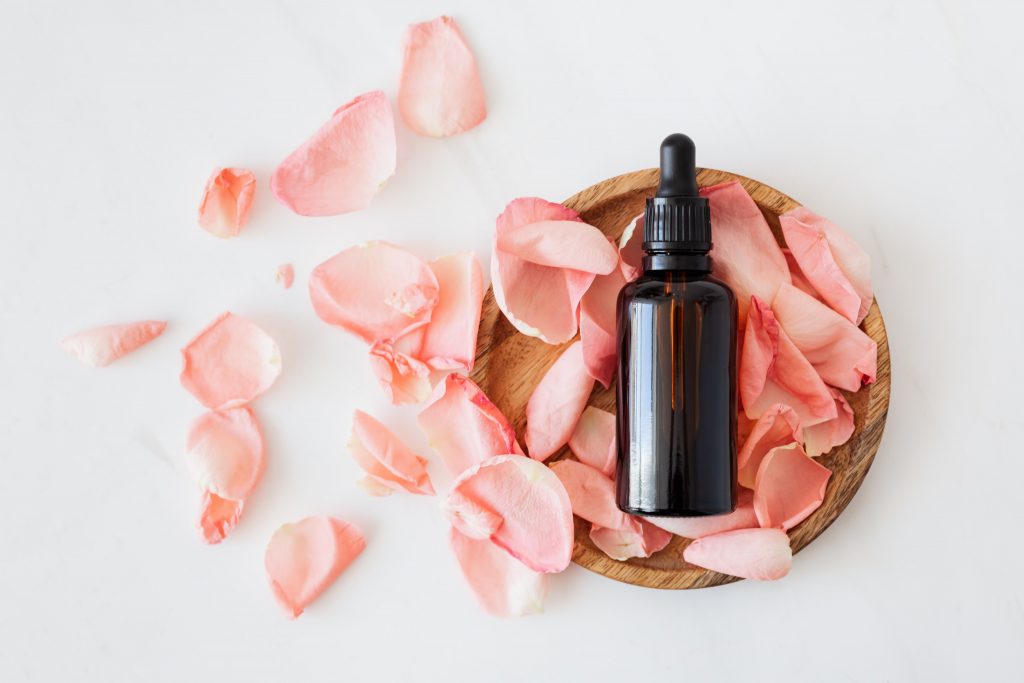
Retinol Increases Epidermal Thickness
Retinoids penetrate the skin in the deeper layers, dr Marjory Nigro explains. Once it does that, our skin starts producing new cells faster and in a better way – they are healthier, younger, and they give you all those excellent effects that we’ve talked about.
By stimulating this production of new cells, what that translates into is the layers of the skin thicken and become healthier. This means your skin will be more resilient and have a glowing and plump appearance.
Retinol has Anti-aging Properties
Retinoids are actually one of the few ingredients that have serious studies behind them to show real effects on wrinkles. This works because retinol thickens the layers of your skin, which makes for plumper-looking complexion; in time, this process will give that illusion of a more” stretched” skin, making the fine lines and wrinkles less visible.
Using retinoids also increases collagen and elastin production, further contributing to a tighter and firmer appearance. This gives us that glowing and more youthful look that we all strive for.
Retinol Prevents Photodamage
People think retinoids should not be used in the summertime because they make your skin more sensitive to sunlight. That is actually not true but rather a misinterpretation of the fact they shouldn’t be used in the daytime (because the ingredient itself is unstable to sunlight).
The fact is using retinol makes your skin more adapted to withstand photodamage in the long term. For once, the faster cell turnover determines the skin layers to become thicker and healthier; and it also helps fight free radicals, which form mainly from exposure to UV rays.
On the other hand, retinol also helps reduce hyperpigmentation, meaning the brown spots that you get from too much sun exposure. Long-term usage also reduces fine lines and wrinkles significantly, which are usually made worse by UV rays.
Retinol Helps Deal With Acne
How do retinoids work in general when it comes to acne? We go back to that cell turnover process which vitamin A derivatives accelerate. This means you will eliminate those dead skin cells faster, thus reducing clogged pores, and it has added anti-inflammatory properties. Retinoids also help with PIH (post-inflammatory hyperpigmentation – those reddish-brown spots left after acne breakouts) and improve scarring.
Although tretinoin is the star of the show when treating acne, it’s sometimes trickier to use because of the irritating potential. So starting with over-the-counter retinol may be the best idea, especially for those with more sensitive skin.
Retinol has to convert to retinoic acid within the epidermis, but it can do so effectively, making it a great option for an adaptation period.
How to Use Retinol in Your Skincare Routine
When using a retinoid for the first time, always go on the side of caution.
These are potent ingredients, and they should be treated responsibly to avoid side effects as best we can. As I always like to say, this skincare business is not a sprint but a marathon! So have your eyes on the long-term benefits, not the quick fixes that lead nowhere.
At first, you may want to be careful around the eye area since the skin is very sensitive here and at its thinnest. But you can gradually start applying your retinol there because the eye area tends to have deeper wrinkles and can benefit from this fantastic ingredient.
Once you see in about a month that your skin is perfectly fine with the retinol (meaning that you don’t have any shedding, dry patches, redness, or itching) you can increase the frequency of your applications. Then you can also go for a more potent product with a higher concentration of retinol. Eventually, you can absolutely go for other ingredients in the retinoid family with due caution.
Doing so will most likely mean you will keep side effects to a minimum or even avoid them altogether. You don’t need to go through all that process of ” looking worse before you look better,” Dr. Nigro says.

Tips to Apply Retinol Safely
When it comes to actual application on the skin, you can mix your retinol with any moisturizer you like; Dr. Nigro says either mix it in your hands just before applying it or put layers on top of each other, no matter the order.
Retinol doesn’t have much interactions with other actives; you should never mix it with benzoyl peroxide, though, a product used as an antibacterial for treating acne.
Can Retinol Be Used by Everyone?
The short answer is yes. Everyone can find a proper form of retinoid to try, whether we are talking about the simplest form or the more advanced ones. Dr. Nigro says she puts all her patients on some form of vitamin A derivative, no matter the age or the skin condition.
Should I Use Retinol During the Day or Only at Night?
Generally, ingredients that are part of the retinoid family are unstable to light. This means your retinol will break down and will no longer be effective when exposed to sunlight.
Some of the newer generation vitamin A derivatives seem to be more photostable, such as adapalene, that we previously mentioned (found in products like Differin). But as a general rule of thumb, always use your retinol at night to be on the safe side.
How to Avoid or Treat Retinol Burns, Purges or Rashes
Always start very slowly when introducing retinoids to your skincare routine – that way, you won’t have any problems with it, Dr. Marjory Nigro says. A stronger one may cause irritation, redness, burning, and shedding skin.
This usually means you started too strong, and your skin is not prepared for the potency of that particular active ingredient. It will give that effect of” looking worse before you look better,” the dermatologist says.
You can avoid significant side effects by starting with a milder version of this family – meaning retinol. It’s equally as important to apply it maybe twice a week, at first; definitely not daily, as too often can also lead to irritation and shedding, especially when dealing with sensitive skin.
Here are some of the most common side effects that you may experience when using a retinoid:
Retinol Rash
Products with retinol could produce some skin rash that makes it feels itchy, with dry patches, and appears red. At this point, you probably used too much, too soon, and that caused some dryness, so taking a break is a good idea.
Try using just soothing products for a few days and then slowly start on your retinol again, with more caution this time.
Retinol Purge
Given that retinoids increase cell turnover, they can also bring out some comedones forming in the deeper levels of the skin. This can cause something that looks like an acne flare-up, but it’s just part of the normal process of adapting to the new product.
The purging usually goes away in a month or a month and a half, and it varies from person to person. But when do you know when it’s purging and when your skin simply doesn’t agree with that particular formula?
If you experience this acne flare-up for over a month and a half, that is too long to be just the usual adaptation process. If you have these bumps in areas where you țve never had them before, that is also a sign that your skin is irritated or has some sort of allergic reaction. This is when you should stop using the product, give your skin some basic and soothing layers, and maybe try something else when everything is back to normal again.
To best avoid this side effect, always try introducing retinol in your routine slowly and with proper care for your skin. Ensuring your skin is adequately hydrated is also a good idea since the lack of water can increase irritation and worsen the whole purging process.
Keep in mind that not everyone experiences this side effect, especially if the formula and active ingredient are gentle and you introduce it to your routine properly. So no purging doesn’t mean it’s not working, just that your skin is reacting well.
Retinol Burns
Retinol burn is another form of rash or irritation but at a more significant stage. Usually, the skin is not only red and flaky but also with severe itching and sensitive to touch.
In general, this means you’ve disrupted your skin barrier – that outer layer that keeps our skin in perfect balance. So the complxion is now very fragile and exposed to the outside environment, and it needs immediate soothing.
Start by removing any active ingredients, use a very gentle cleanser, and only apply basic layers of humectants (aloe vera, hyaluronic acid) and soothing agents (oat extract, Centella Asiatica). Give your complexion the chance to fully restore itself before reattempting using any other retinol.
Retinol Shedding
When using this a retinoid, it is normal for the stratum corneum to become thinner – meaning those dead cells on the skin’s surface that make us look dull. So some shedding or peeling is bound to happen. But if there is visible shedding, and the skin becomes flaky and very dry, that is a sign that something is wrong.
What usually happens is that you started with too much too soon – either the ingredient is too potent, the concentration too high, or you thought you could look 20 years younger immediately if you apply the product every night.
As we’ve said, slow and steady will get you where you need to go. Just slow down the number of applications, and increase those soothing and hydrating layers. If that doesn’t help, the product could be too strong for you, and you want to downgrade to a gentler option.
Retinol Dryness
As mentioned above, one of the side effects of using a retinoid, in general, may be dryness of the skin. This can be a direct result of too frequent applications or the product being too harsh and disrupting your normal hydrolipidic film. This usually promotes transepidermal water loss – meaning you skin can’t hold on to moisture and water evaporates from its surface, leaving it dehydrated.
You may want to increase the hydration provided to your skin – try layering humectants like hyaluronic acid, glycerin, or aloe vera; on top use more moisturizing creams suited for your skin type.
How Long Does It Take for Retinol to Work?
Dr. Marjory Nigro says that in general, it takes between 3 to 6 months to see any results – however, how quick retinol shows results depends very much from person to person; some of us will see rapid changes in the quality and appearance of our skin, such as a more even complexion, while for others, it will take longer.
The more profound effects, such as reducing hyperpigmentation, firmness, and wrinkles fading, will start showing up closer to 3 to 6 months or longer. Don’t lose patience, even if you don’t see spectacular results right away. Again, think of this process as a marathon – long-term results are what you should aim for because those will stick.
Dr. Marjory Nigro further explains that an active ingredient penetrates the basal layer of the skin (the deepest one) in about a week. After that, better and younger cells start producing when using retinoids; but it takes up to two months for those newer cells to get to the surface of your complexion. That is when you’ll usually start seeing significant results. For truly dramatic results, wait around 6 months to longer.
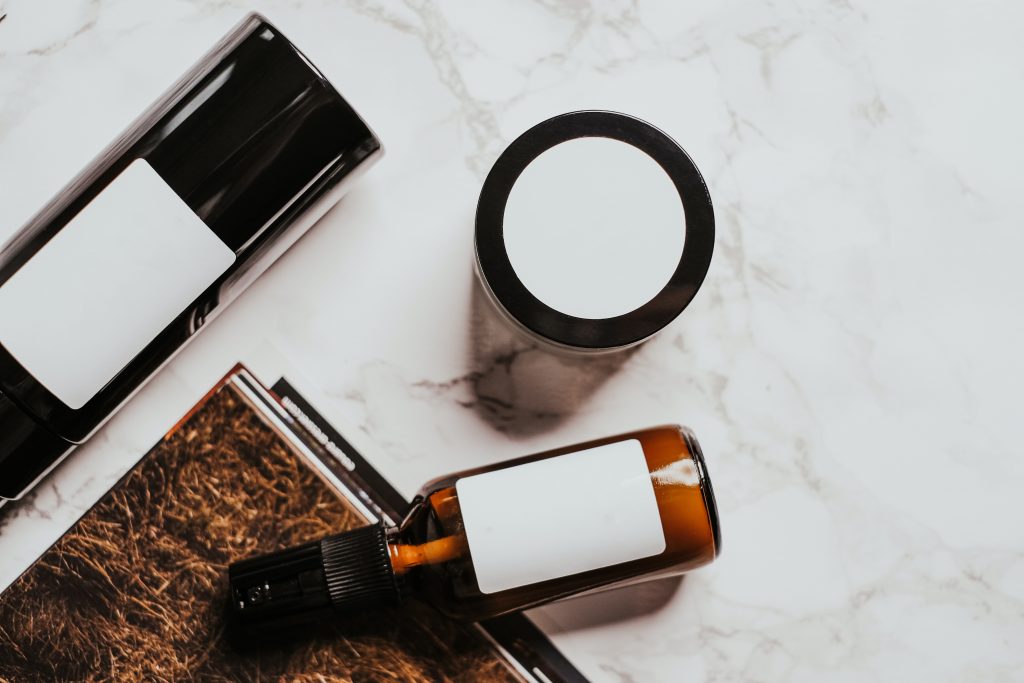
Retinol and Sun Exposure
There is a myth out there saying you cannot use retinoids in the summertime when the sun rays are much stronger (the UVB ones especially, that cause burning). Dr. Marjory Nigro says this idea was perpetuated because you cannot use the products in the daytime, so the information was distorted.
As mentioned above, most retinoids are unstable to light; when exposed to sunlight, they degrade quickly, so what you’re left with is an ineffective product. Early results suggest that the newer generation ones (like tazarotene or adapalene) are more stable. But to avoid any confusion, it’s best to use retinol and other vitamin A derivatives at night to make sure you get the most of them and what they have to offer.
But this information got misinterpreted as “you can’t use retinoids in the summertime.” That is just not true; with proper sunscreen and caution, you can use retinol all year round.
A few notes here – given the fact retinoids decrease your stratum corneum, the complexion, in general, may be a little more exposed. In other words, the dead cells from the surface are removed and what you’re left with is the newer ones, that are stimulated to grow faster. Also, consider that irritation and inflammation can make the skin more sensitive to light and prone to hyperpigmentation (known as melasma). So be careful if your retinol product is causing you significant side effects.
Always remember to take good care of your skin, make sure you don’t use too much too soon, and apply a good amount of sunscreen every single day. Dr. Marjory Nigro suggests using an SPF of 30 or higher, and don’t forget to reapply during the day.
Takeaways
When it comes to visible results in skincare, it’s safe to say the retinoid family is royalty. They have amazing benefits for different skin types and skin concerns, such as dullness, acne, and aging. They are the only ingredients that have strong studies behind them showing they reduce deep wrinkles.
As Dr. Nigro says, everyone should get on the retinol wagon because it’s probably the best thing you will ever do for your skin. Be sure to check out our recommended retinol creams and serums and start using retinol today!
You can also watch our whole retinol discussion with Dr. Nigro on YouTube!






